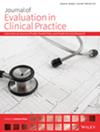Improving the Reimbursement Process for New Drugs: A Case Study of a Two-Waiver System in South Korea
Abstract
Objectives
To empirically analyse the case of a newly introduced system in Korea to improve the process of drug reimbursement to investigate the application of the waiver system to economic evaluations and pricing negotiations, to examine the characteristics and inclusion outcomes of drugs subject to this system and to derive implications for improving patient access and financial sustainability.
Methods
A drug data set was compiled using data from the Ministry of Health and Welfare (MoHW) and public institutions. Additional information on pharmaceutical companies and indications was obtained from the Korea Food and Drug Administration (KFDA). Descriptive statistics were used to summarise variable distributions. Chi-squared tests and multivariate logistic regression analyses, including interaction terms, were performed to determine differences before and after the implementation of the waiver system and their relevance to negotiation outcomes. Statistical analysis was performed using SPSS version 27.0 with a significance level of 0.05.
Results
From 2007 to 2022, a total of 785 new drugs have been introduced. In Korea, the waiver system includes two types: a price negotiation waiver primarily for non-orphan and non-cancer drugs and an economic evaluation waiver designed for orphan and cancer drugs with significant clinical needs. Drugs listed in three or fewer countries were significantly more likely to utilise the price negotiation waiver system due to pricing disadvantages associated with limited international registration. Since the introduction of the two waiver systems, there has been a notable increase in negotiation agreement rates for orphan and cancer drugs, a trend supported by regression analysis.
Conclusions
This study demonstrates how Korea's two-waiver system streamlined the reimbursement process, improving access to orphan and cancer drugs while ensuring financial sustainability. The system's eligibility criteria effectively balance the needs of noncritical and critical diseases, ensuring equitable access while maintaining fiscal responsibility. These findings have important institutional implications for improving patient access to medicines while effectively managing financial expenditure.


 求助内容:
求助内容: 应助结果提醒方式:
应助结果提醒方式:


